Abstract
In wilted barley leaves, betaine accumulates at about 200 nanomoles per 10 centimeters leaf per day. Results with 14C-labeled precursors were qualitatively and quantitatively consistent with de novo synthesis of this betaine from serine via ethanolamine, choline, and betaine aldehyde and indicated that water stress may increase the activities of all steps in this pathway except the last.
Doses (1 micromole) of each 14C-labeled precursor were supplied as droplets to the tips of attached, 10-centimeter, second-leaf blades of turgid and wilted plants, and the incorporation of 14C into betaine was followed. From the rates of betaine labeling, estimates were made of the potential capacities (nanomoles per 10 centimeters leaf per day) for the methylation and oxidation steps. Labeling of betaine from [14C]choline, [14C]ethanolamine, and [14C]serine was about 7- to 10-fold greater in leaves wilted for 2 days than in turgid leaves, whereas label from [14C]betaine aldehyde appeared in betaine at about the same rate in both turgid and wilted leaves. In leaves wilted for 2 days, the potential capacities for converting [14C]ethanolamine, [14C]choline, and [14C]betaine aldehyde to betaine all approached or exceeded the rate of betaine accumulation (about 200 nanomoles per 10 centimeters leaf per day); in turgid leaves, only the potential for converting betaine aldehyde to betaine exceeded this rate. The rate of conversion of [14C]ethanolamine to betaine increased 4-fold after 6 to 10 hours of wilting, which was soon enough to account for the onset of betaine accumulation.
Full text
PDF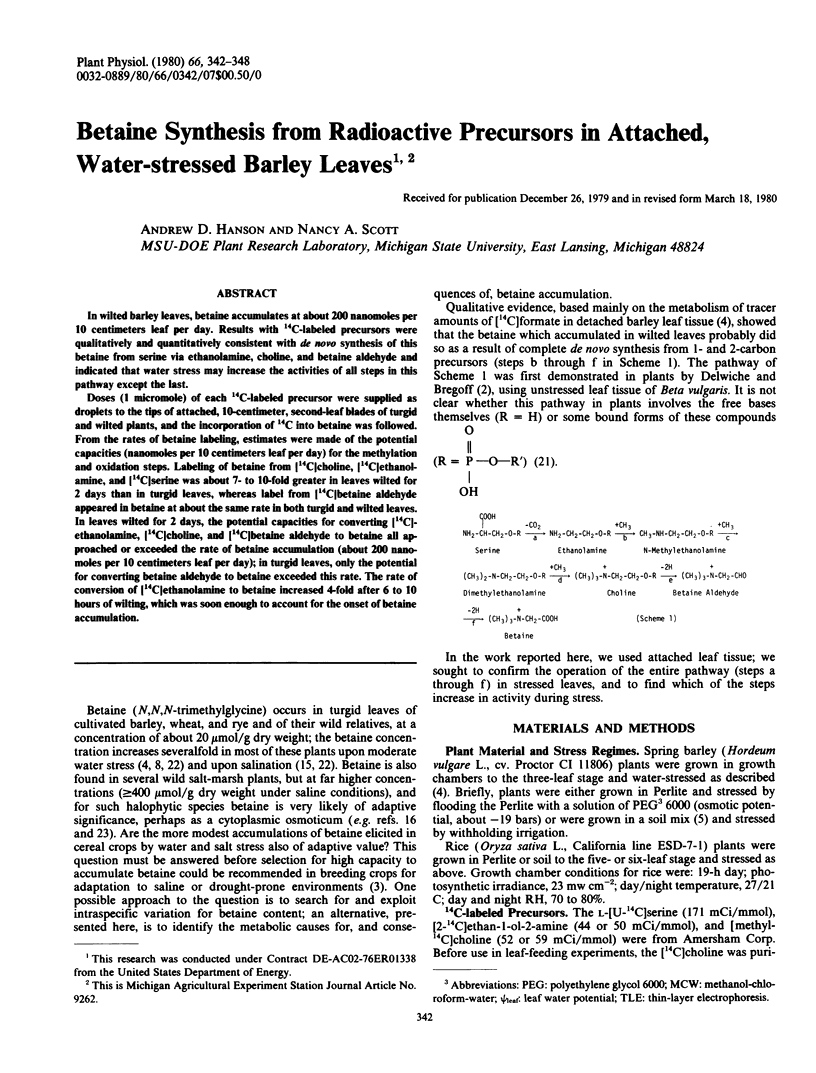
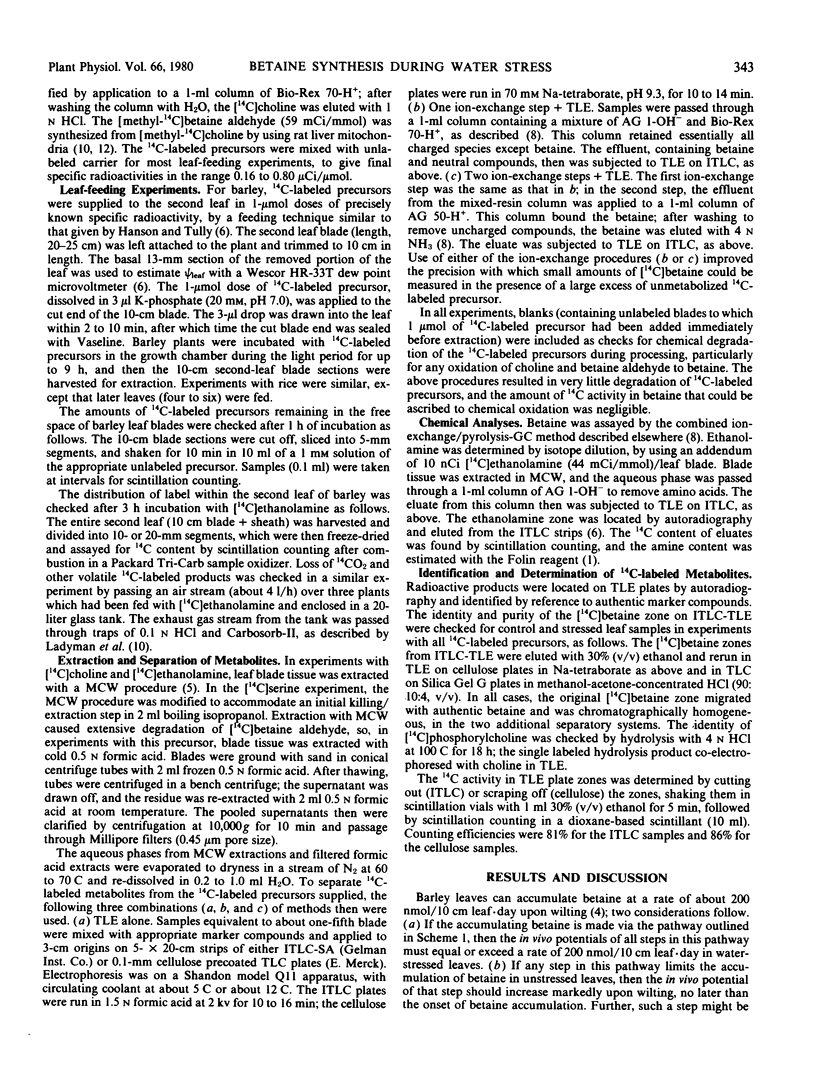
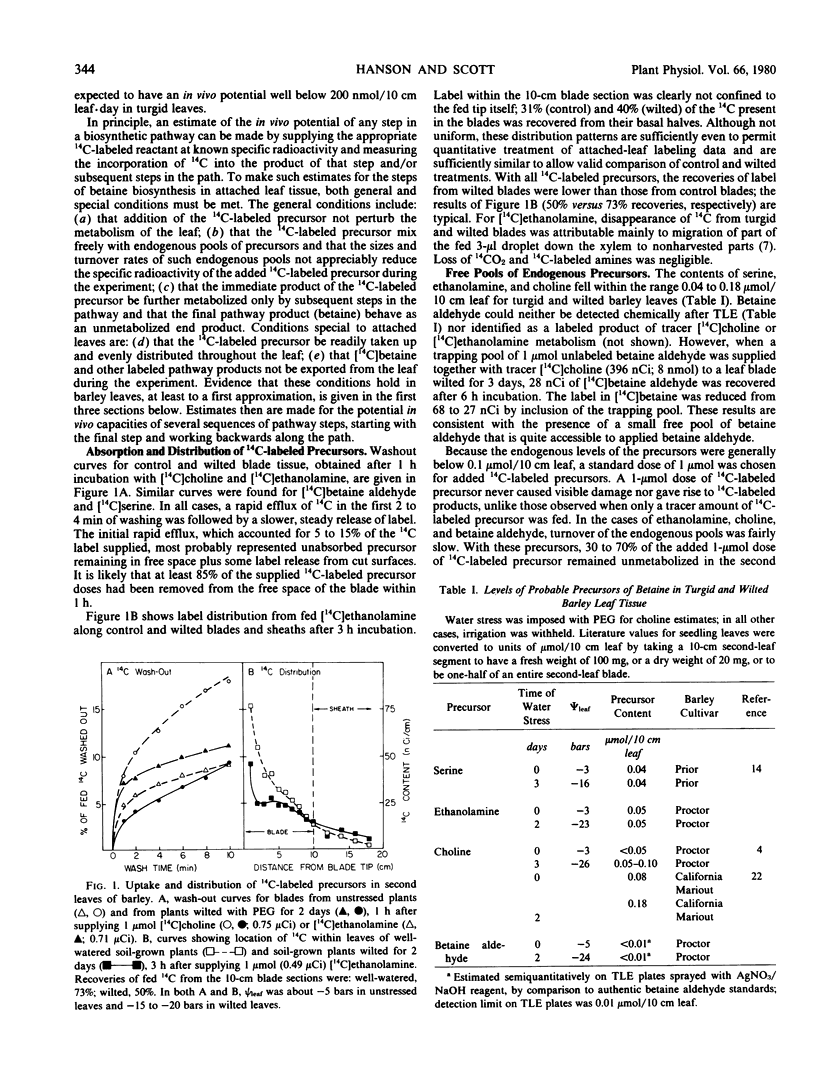

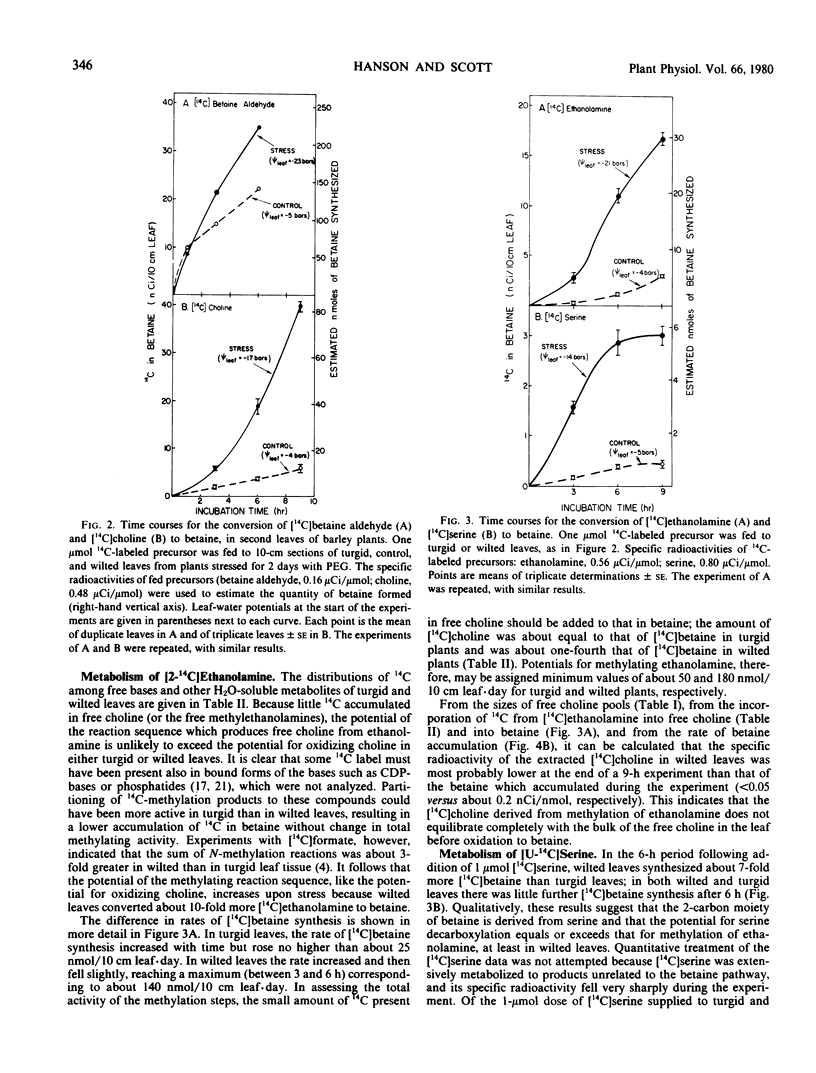

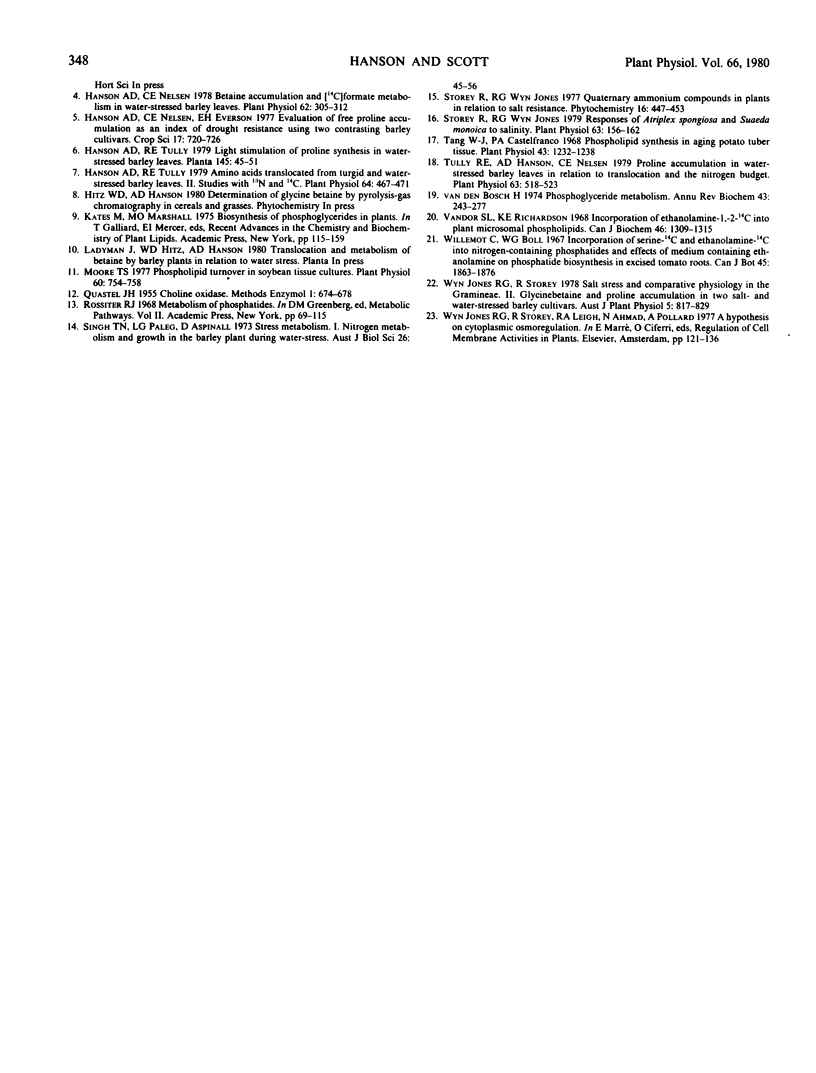
Selected References
These references are in PubMed. This may not be the complete list of references from this article.
- DELWICHE C. C., BREGOFF H. M. Pathway of betaine and choline synthesis in Beta vulgaris. J Biol Chem. 1958 Aug;233(2):430–433. [PubMed] [Google Scholar]
- Hanson A. D., Nelsen C. E. Betaine Accumulation and [C]Formate Metabolism in Water-stressed Barley Leaves. Plant Physiol. 1978 Aug;62(2):305–312. doi: 10.1104/pp.62.2.305. [DOI] [PMC free article] [PubMed] [Google Scholar]
- Hanson A. D., Tully R. E. Amino Acids Translocated from Turgid and Water-stressed Barley Leaves : II. Studies with N and C. Plant Physiol. 1979 Sep;64(3):467–471. doi: 10.1104/pp.64.3.467. [DOI] [PMC free article] [PubMed] [Google Scholar]
- Moore T. S. Phospholipid turnover in soybean tissue cultures. Plant Physiol. 1977 Nov;60(5):754–758. doi: 10.1104/pp.60.5.754. [DOI] [PMC free article] [PubMed] [Google Scholar]
- Storey R., Jones R. G. Responses of Atriplex spongiosa and Suaeda monoica to Salinity. Plant Physiol. 1979 Jan;63(1):156–162. doi: 10.1104/pp.63.1.156. [DOI] [PMC free article] [PubMed] [Google Scholar]
- Tang W. J., Castelfranco P. A. Phospholipid synthesis in aging potato tuber tissue. Plant Physiol. 1968 Aug;43(8):1232–1238. doi: 10.1104/pp.43.8.1232. [DOI] [PMC free article] [PubMed] [Google Scholar]
- Tully R. E., Hanson A. D., Nelsen C. E. Proline Accumulation in Water-stressed Barley Leaves in Relation to Translocation and the Nitrogen Budget. Plant Physiol. 1979 Mar;63(3):518–523. doi: 10.1104/pp.63.3.518. [DOI] [PMC free article] [PubMed] [Google Scholar]
- Vandor S. L., Richardson K. E. Incorporation of ethanolamine-1,2-14C into plant microsomal phospholipids. Can J Biochem. 1968 Oct;46(10):1309–1315. doi: 10.1139/o68-196. [DOI] [PubMed] [Google Scholar]
- van den Bosch H. Phosphoglyceride metabolism. Annu Rev Biochem. 1974;43(0):243–277. doi: 10.1146/annurev.bi.43.070174.001331. [DOI] [PubMed] [Google Scholar]


